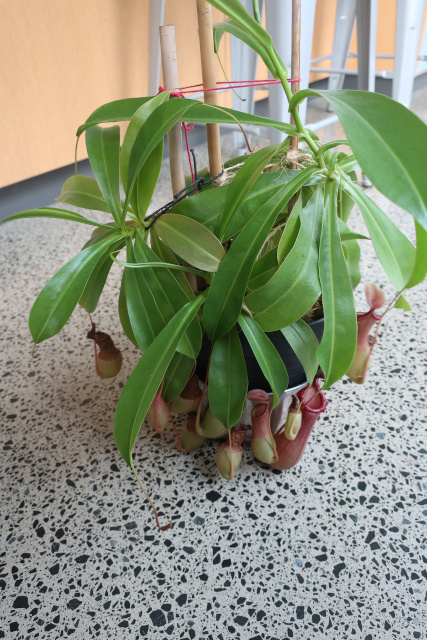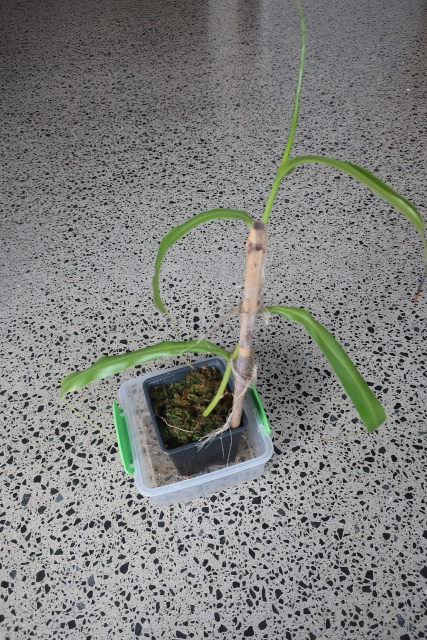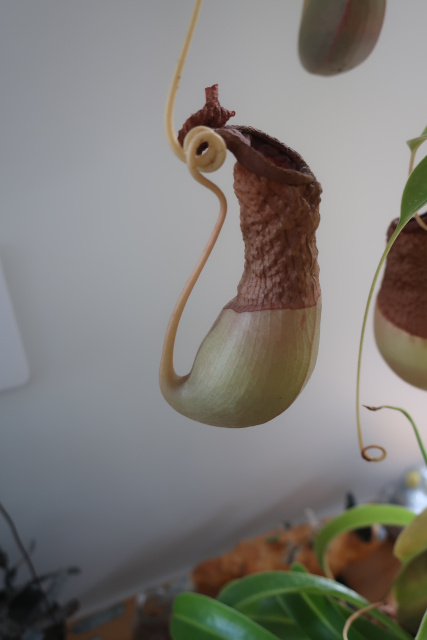Pitcher Plants
In my kitchen I have a number of pitcher plants. I am unsure of the species, but they are vine-like and the genus is Napenthes. They do a good job of mopping up unwanted insects in the room, have nice foliage, are curious to look at and appear to thrive well in the New Zealand climate.

As they can grow tall, I am often taking cuttings which I give to people who are interested. In fact, a friend gave me my cuttings to start with.

Recipients ask me how one should look after them. From some reading and experimentation, I have found that this is not too hard but there are a few things to know. I am no expert on the matter, but here are some pointers that have worked out for me.
Pots and substrate
They seem to grow well in spagnum moss which you can get from a garden store. Dried spagnum which is rehydrated works well. The pot needs to be non-porus. A plastic pot is best or a ceramic pot which has been glazed. A pot of diameter 150mm seems to work well.
If you need to transfer the plant into a larger or different pot, be careful to keep the plant upright so that the pitchers don’t revert and loose their liquid. This can be a two player game.
Watering
The moss should be kept constantly damp / well hydrated but the pot shouldn’t stand in water. I tend to water the moss and not the pitcher plant. The moss should only be watered with rain-water and definitely not town-supply or treated water. This can be a bit tricky during dry spells; so make sure to keep some collected rain water in reserve.
Light
They don’t like direct sunlight and prefer diffuse light.
Pitchering
At first, the plant will grow but doesn’t produce any pitchers and then slowly they start to produce pitchers off the leaves. A leaf will grow a curly tentril off the end, and it can often take some months for the tendril to finally form into a pitcher.
Once a pitcher has aged it tends to shrivel and go brown from the top.

This seems to be normal. Let it do this and when the leaf and pitcher have shriveled up, snip off the dead leaf.
Cuttings and propagation
As they grow like a vine, I tend to stake them up with slender bamboo poles. As mentioned above, they do get too tall eventually and this is a good time to take cuttings using a sharp knife to make a clean-cut. The original plant will tend to sprout a new branch from behind the incision point. The cutting should be quickly inserted into a pot of fresh spagnum. It seems to take a couple of months to get going.